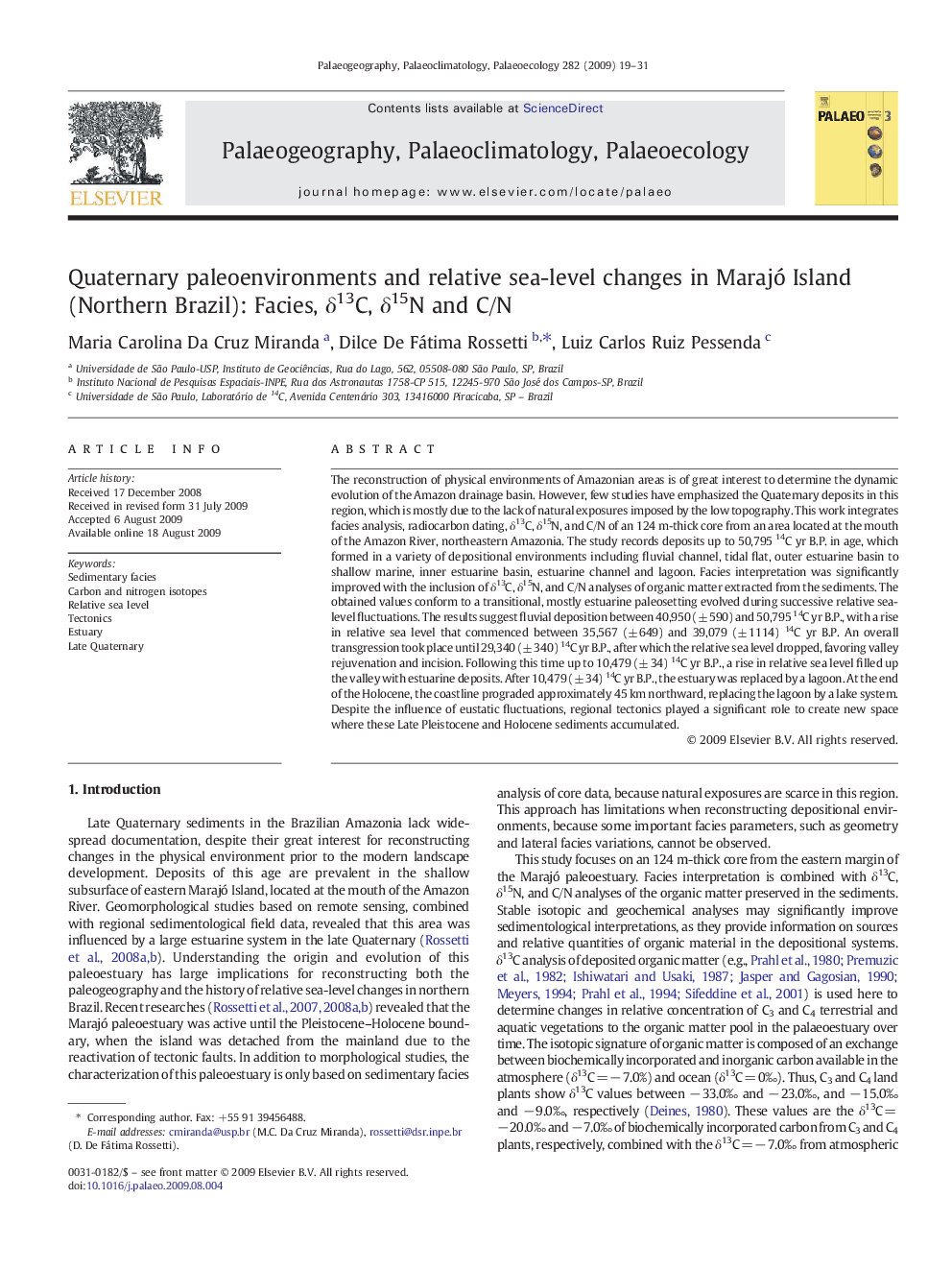| کد مقاله | کد نشریه | سال انتشار | مقاله انگلیسی | نسخه تمام متن |
|---|---|---|---|---|
| 4467918 | 1622293 | 2009 | 13 صفحه PDF | دانلود رایگان |

The reconstruction of physical environments of Amazonian areas is of great interest to determine the dynamic evolution of the Amazon drainage basin. However, few studies have emphasized the Quaternary deposits in this region, which is mostly due to the lack of natural exposures imposed by the low topography. This work integrates facies analysis, radiocarbon dating, δ13C, δ15N, and C/N of an 124 m-thick core from an area located at the mouth of the Amazon River, northeastern Amazonia. The study records deposits up to 50,795 14C yr B.P. in age, which formed in a variety of depositional environments including fluvial channel, tidal flat, outer estuarine basin to shallow marine, inner estuarine basin, estuarine channel and lagoon. Facies interpretation was significantly improved with the inclusion of δ13C, δ15N, and C/N analyses of organic matter extracted from the sediments. The obtained values conform to a transitional, mostly estuarine paleosetting evolved during successive relative sea-level fluctuations. The results suggest fluvial deposition between 40,950 (± 590) and 50,795 14C yr B.P., with a rise in relative sea level that commenced between 35,567 (± 649) and 39,079 (± 1114) 14C yr B.P. An overall transgression took place until 29,340 (± 340) 14C yr B.P., after which the relative sea level dropped, favoring valley rejuvenation and incision. Following this time up to 10,479 (± 34) 14C yr B.P., a rise in relative sea level filled up the valley with estuarine deposits. After 10,479 (± 34) 14C yr B.P., the estuary was replaced by a lagoon. At the end of the Holocene, the coastline prograded approximately 45 km northward, replacing the lagoon by a lake system. Despite the influence of eustatic fluctuations, regional tectonics played a significant role to create new space where these Late Pleistocene and Holocene sediments accumulated.
Journal: Palaeogeography, Palaeoclimatology, Palaeoecology - Volume 282, Issues 1–4, 15 November 2009, Pages 19–31